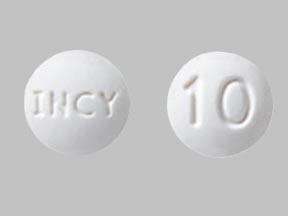Ruxolitinib and Alcohol/Food Interactions
There are 2 alcohol/food/lifestyle interactions with ruxolitinib.
Ruxolitinib Food/Lifestyle
Moderate Food Interaction
GENERALLY AVOID: Grapefruit juice may increase the plasma concentrations of ruxolitinib. The proposed mechanism is inhibition of CYP450 3A4-mediated first-pass metabolism in the gut wall by certain compounds present in grapefruits.
MANAGEMENT: Patients treated with ruxolitinib should avoid consumption of grapefruit, grapefruit juice, and any supplement containing grapefruit extract. Ruxolitinib may be administered with or without food.
References (1)
- (2011) "Product Information. Jakafi (ruxolitinib)." Incyte Corporation
Switch to consumer interaction data
Ruxolitinib High Cholesterol (Hyperlipoproteinemia, Hypertriglyceridemia, Sitosterolemia)
Moderate Potential Hazard, Moderate plausibility
ruxolitinib - lipid elevations
The use of ruxolitinib may increase total cholesterol, low-density lipoprotein (LDL) cholesterol, and triglycerides. It is recommended to assess lipid parameters approximately 8-12 weeks following initiation of therapy and to monitor and treat per clinical guidelines for the management of hyperlipidemia. Care should be exercised when using this agent in patients with lipids disorders.
References (1)
- (2011) "Product Information. Jakafi (ruxolitinib)." Incyte Corporation
Switch to consumer interaction data
Ruxolitinib drug interactions
There are 515 drug interactions with ruxolitinib.
Ruxolitinib disease interactions
There are 12 disease interactions with ruxolitinib which include:
- cardiovascular risk
- malignancy
- thrombosis
- lung toxicity
- cytopenia
- hepatic impairment
- Hepatitis B
- infections
- lipid elevations
- PML
- renal impairment
- tuberculosis
More about ruxolitinib
- ruxolitinib consumer information
- Check interactions
- Compare alternatives
- Reviews (43)
- Side effects
- Dosage information
- During pregnancy
- Drug class: multikinase inhibitors
- Breastfeeding
- En español
Related treatment guides
Drug Interaction Classification
| Highly clinically significant. Avoid combinations; the risk of the interaction outweighs the benefit. | |
| Moderately clinically significant. Usually avoid combinations; use it only under special circumstances. | |
| Minimally clinically significant. Minimize risk; assess risk and consider an alternative drug, take steps to circumvent the interaction risk and/or institute a monitoring plan. | |
| No interaction information available. |
See also:
Further information
Always consult your healthcare provider to ensure the information displayed on this page applies to your personal circumstances.


